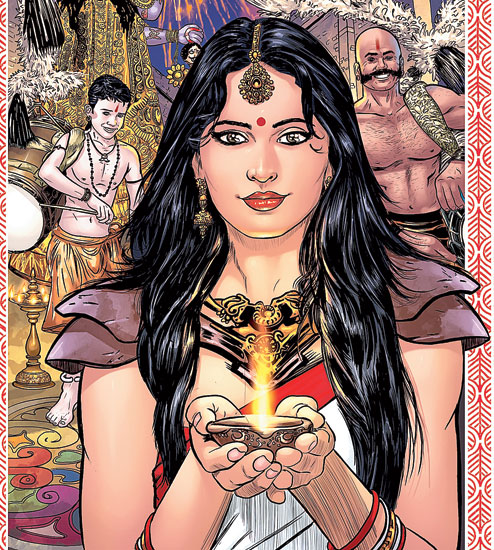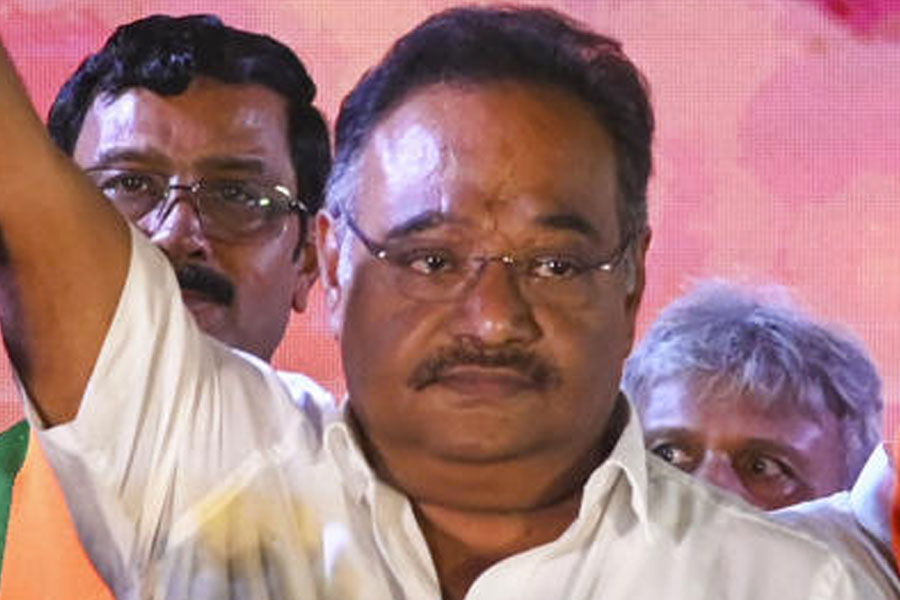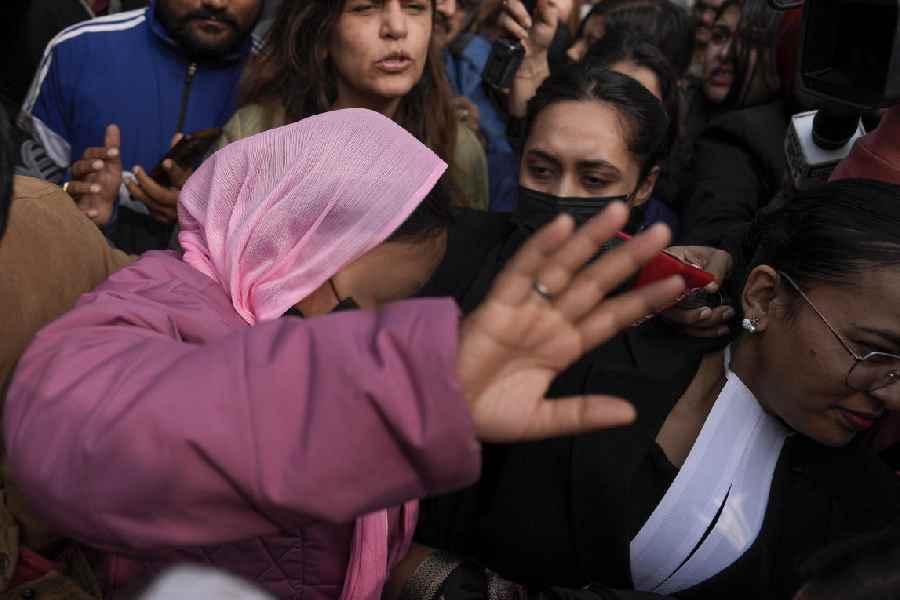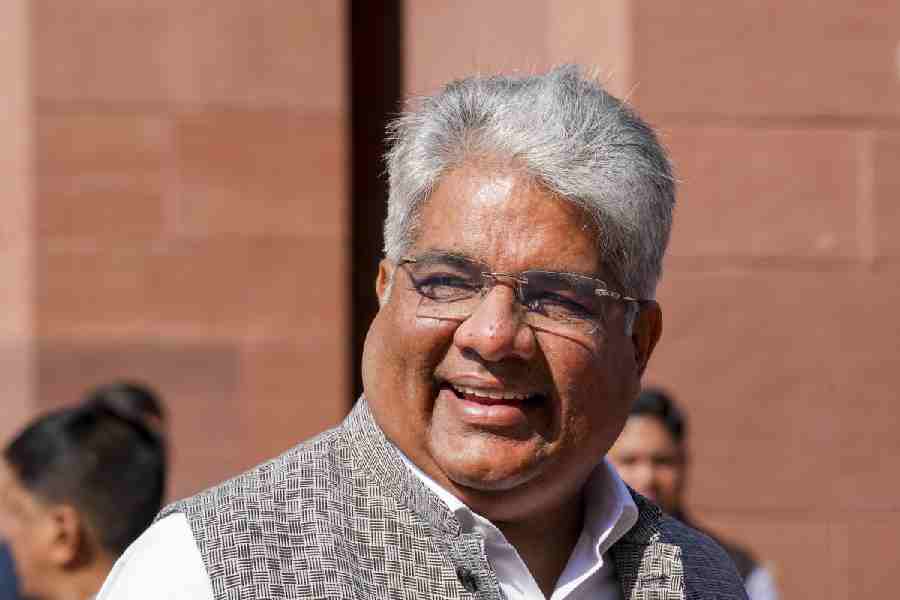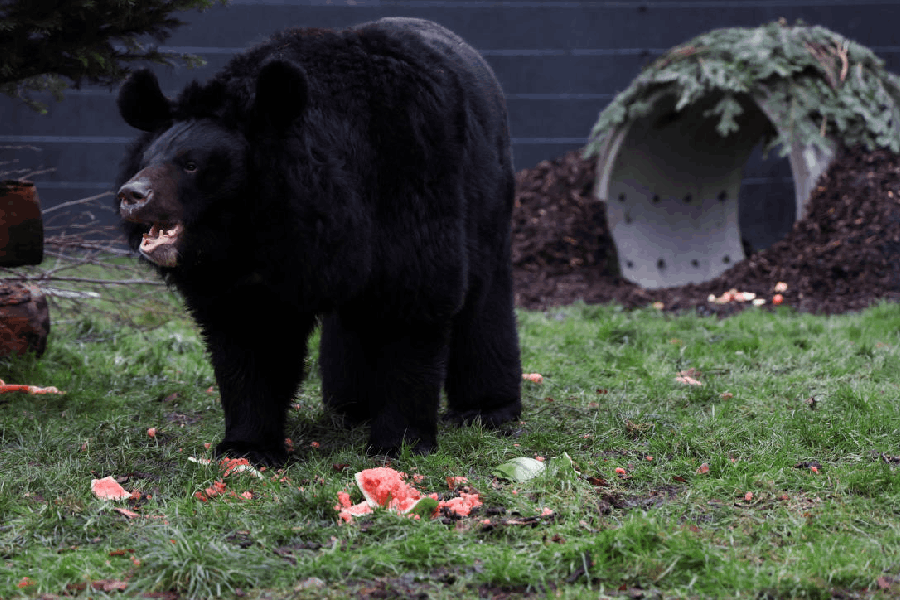
Beware of this Bai from Mumbai. She wields a broom - and a mean gun. Angry Maushi is out to get corrupt politicians, spewing out choice expletives as she takes on the system.
Priya is on a mission, too. The rural Indian teenager was gang raped and exiled by her community. So she mounts a tiger and punishes her tormentors while standing by with other women.
Devi Choudhurani belongs to another age. She stands up for the oppressed in late 18th century Bengal as bloodthirsty landlords exploit farmers and sexually abuse women.
Roll over superwoman - our own Indian version is here. Alpha women are the focus of a spate of new comic and graphic books in India. While company executives and politicians discuss gender equality in the boardroom or in Parliament, the drawing board is already celebrating womanhood.
"Women superheroes are catching up in Indian comics and graphic novels," agrees Jatin Varma, chief executive officer of Comic Con India, an annual convention of graphic novels and comics in India.
A wider global trend favours superwomen, too. Recently Marvel Comics recast its superhero Thor - based on the macho Thunder God from Norse myth - as a woman. Marvel's She-Hulk, the new Ms Marvel, featuring a 16-year-old Pakistani-American Muslim called Kamala Khan, and the all-women A-Force comic book series are now big hits in the West.
Marvel's rival DC Comics, too, has refreshed old female characters such as Batwoman, Batgirl and Catwoman in central roles. "They are also gearing up for big budget movies on Wonderwoman and Captain Marvel, with a sole female lead," Varma points out. "If these movies turn out to be hits, the trend will come a full circle."
Unlike in the past, these female comic characters dominate the story and are not depicted as damsels in distress or victims who need to be rescued by a male protagonist. "Albeit slowly, we have started showing women in a new light, not as hapless victims but strong, natural leaders," confirms Shamik Dasgupta, who recreated Devi Choudhurani in a graphic novel.
His depiction, he points out, is stronger than the one made famous by the writer Bankim Chandra Chattopadhyay in his Bengali novel of the same name. "I have portrayed her as a more empowered woman," he says.
Dasgupta is working on a sequel called Dwairath (Duel), to be released later this year or early next year. The first part, called Matsyanyaya, was published in 2013.
Some believe that the spurt in the number of superwomen can be linked to the huge outcry that the brutal rape and murder of a young woman in Delhi in 2012 sparked across the country.

"I was in Delhi when the horrible gang rape happened and was involved in the protests that followed," says US-based filmmaker Ram Devineni, the creator of Shakti featuring Priya. "I knew then the problem of sexual violence in India was not a legal issue, rather it was a cultural problem. A cultural shift had to happen. Deep-rooted patriarchal views needed to be challenged."
So he thought of Priya, a young woman who could be from anywhere. In the story, Priya confronts a tiger in the jungle. "She turns her fear, the tiger, into her power - shakti," he adds.
But even before Priya, Indian women-centric comics were being toasted abroad. Director Shekhar Kapur's Devi series and Deepak Chopra's India Authentic were released in 2007 and won critical acclaim. They in turn opened up a new genre of comic books in India which may not be bestsellers, but are doing brisk business.
Many of the new superwomen are drawn from Indian mythology. "Indian mythology is actually very diverse in terms of the gender distribution of protagonists - something we should really be proud of," says Saurav Mohapatra, creator of Kali, Uma, Sarawsati and a few other graphic novels in Kapur's Devi series.
Although inspired by mythology, his character Tara Mehta (the alter ego of goddess Durga) was fleshed out as an independent woman in modern India, he points out.

Mythology is one of the genres in the bouquet of Campfire Graphic Novels, published by the New Delhi-based Kalyani Navyug Media Pvt. Ltd. "Sita and Draupadi are two of our award-winning titles," says director, Girija Jhunjhunwala. "We don't focus on women as superheroes, but there's no gender bias. The women are achievers and role models."
But illustrator Abhijit Kini's Angry Maushi is free from all mythological moorings. "It's a trilogy centered on a broom-brandishing, sari-clad, rotund vigilante," Kini says.
Kini never thought he'd sell over 3,000 copies of the self-published comic book. But it caught the fancy of the Indian reader. "Angry Maushi hits the right chord - it talks about the long-standing frustrations of most Indians," Varma of Comic Con India explains.
It's not just the angry aunt's mission that's appealing. Readers also enjoy the image of a superwoman far removed from the usual cape-covered, long-legged wonder-woman made popular by Western comics. Angry Maushi is just the opposite.
"What we see of women in most comics is presented through the 'gaze of the male'. They are shown as men would want to see them," holds graphic novelist Sankha Banerjee, lecturer of applied art at Rabindra Bharati University, Calcutta. He has also illustrated many Campfire graphic novels including one on Mother Teresa.
Priya is different from the usual superwomen in another way - she doesn't have extraordinary powers, she doesn't solve others' problems. "She's an ordinary Indian woman who's turned fearless," Devineni says.
He adds that typical superheroes convey to children that "inhuman bulky god-like beings" will solve all of human societies' problems. "That's the wrong message. Priya does not solve anyone's problems; rather she challenges us all to solve them," he says.
Indeed, who needs a magic wand when there is power in one's hand? And that's the new superwoman in India today.

